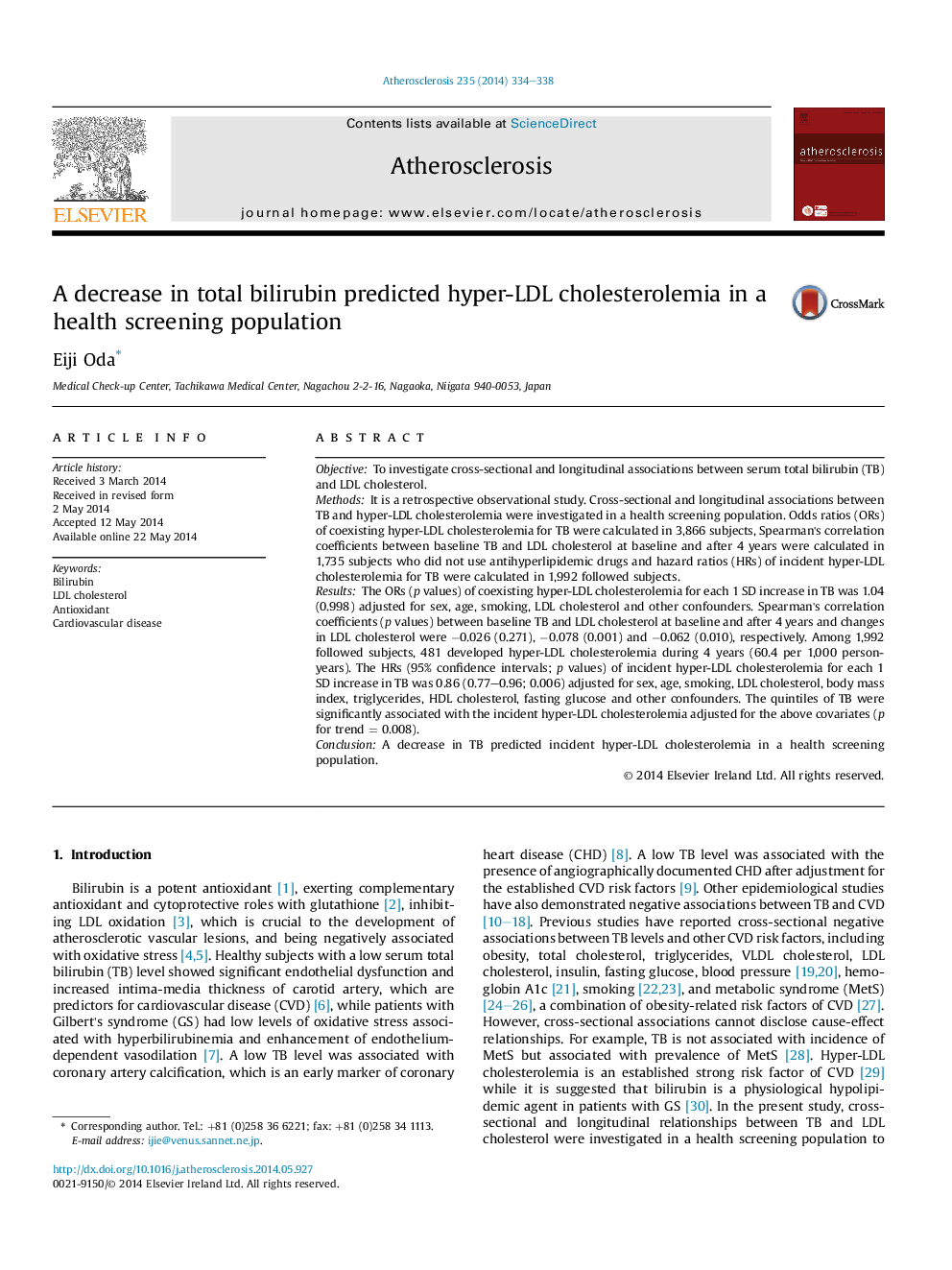| کد مقاله | کد نشریه | سال انتشار | مقاله انگلیسی | نسخه تمام متن |
|---|---|---|---|---|
| 5946116 | 1172357 | 2014 | 5 صفحه PDF | دانلود رایگان |

- Associations between total bilirubin (TB) and LDL cholesterol were investigated.
- There was no significant cross-sectional correlation between TB and LDL cholesterol.
- A decrease in TB predicted incident hyper-LDL cholesterolemia.
ObjectiveTo investigate cross-sectional and longitudinal associations between serum total bilirubin (TB) and LDL cholesterol.MethodsIt is a retrospective observational study. Cross-sectional and longitudinal associations between TB and hyper-LDL cholesterolemia were investigated in a health screening population. Odds ratios (ORs) of coexisting hyper-LDL cholesterolemia for TB were calculated in 3,866 subjects, Spearman's correlation coefficients between baseline TB and LDL cholesterol at baseline and after 4 years were calculated in 1,735 subjects who did not use antihyperlipidemic drugs and hazard ratios (HRs) of incident hyper-LDL cholesterolemia for TB were calculated in 1,992 followed subjects.ResultsThe ORs (p values) of coexisting hyper-LDL cholesterolemia for each 1 SD increase in TB was 1.04 (0.998) adjusted for sex, age, smoking, LDL cholesterol and other confounders. Spearman's correlation coefficients (p values) between baseline TB and LDL cholesterol at baseline and after 4 years and changes in LDL cholesterol were â0.026 (0.271), â0.078 (0.001) and â0.062 (0.010), respectively. Among 1,992 followed subjects, 481 developed hyper-LDL cholesterolemia during 4 years (60.4 per 1,000 person-years). The HRs (95% confidence intervals; p values) of incident hyper-LDL cholesterolemia for each 1 SD increase in TB was 0.86 (0.77-0.96; 0.006) adjusted for sex, age, smoking, LDL cholesterol, body mass index, triglycerides, HDL cholesterol, fasting glucose and other confounders. The quintiles of TB were significantly associated with the incident hyper-LDL cholesterolemia adjusted for the above covariates (p for trend = 0.008).ConclusionA decrease in TB predicted incident hyper-LDL cholesterolemia in a health screening population.
Journal: Atherosclerosis - Volume 235, Issue 2, August 2014, Pages 334-338